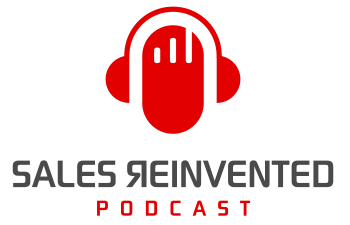
Episode #1 Simon Mestre and Mike Eggert

Meet
Simon Mestre
Simon Mestre, S5 Abrasives Specialist, has spent over 19 years in multiple roles across the 3M Industrial Business. His passion is rooted in helping his peers navigate complex selling scenarios, enjoying the many daily interactions with everyone he meets, and positively impacting his customer’s people, processes, and end products.
Our Mission Is To Change The Negative Perception Of Sales People

Meet
Mike Eggert
Eggert, Area Portfolio Manager, has spent the last three decades in the 3M Abrasives business. He has a passion for helping sales professionals achieve success, for helping operators be safer and more comfortable in their work, and for helping customers become more efficient and profitable.
Our Vision Is A World Where Selling Is A Profession To Be Proud Of
Join us as we discuss how to transform challenging sales scenarios into rewarding partnerships, proving that true value goes beyond dollars and cents. Whether you’re in sales or simply interested in business success stories, this episode is packed with insights that will transform your approach to value-based selling.
Outline of This Episode
- [0:00] Our 3M Shaped for Success series features interviews with 3M sales specialists to showcase best practices in sales
- [5:16] Understand customer success criteria and align it with company goals to address issues and deliver value
- [7:34] Set new expectations by understanding customer processes to create operational excellence beyond just focusing on price
- [12:37] Focus on demonstrating value to customers rather than justifying price; use data to reinforce the value proposition effectively.
- [15:44] Focus on the customer’s most pressing challenges
- [16:53] Simon’s top three do’s and don’ts for presenting value with the 3M Value Analysis Tool
Shifting Focus from Cost to Customer-Centric Value Using the 3M Value Analysis Tool
Many sales professionals fall into the trap of defaulting to discounts when faced with price objections. Our guest this week, Mike Eggert, Senior Manager in the Abrasives Systems Division at 3M, emphasizes a crucial perspective: Sales should be driven by value creation, not just cost-minimization. He argued that just as customers wouldn’t willingly pay more without justification, sales reps shouldn’t be quick to discount without showcasing the substantial value their products or services bring.
Focusing on value benefits the customer and creates a more profitable and productive relationship for everyone. When sales professionals understand their customers’ operations and demonstrate how their offerings can increase efficiency and profitability, lowering prices becomes unnecessary. The 3M Value Analysis Tool helps this process by quantifying a product’s real impact, moving the conversation beyond surface-level pricing.
The 3M Value Analysis Tool
The 3M Value Analysis Tool allows sales teams to amplify their value-based selling strategies. It gathers accurate data on costs such as labor and materials and allows sales reps to compare customers’ current expenses with potential savings garnered through 3M solutions.
This tool encourages discussions grounded in tangible results rather than abstract promises. By showcasing specific performance metrics and financial outcomes, sales professionals can engage in more meaningful conversations and align outcomes with the customer’s most pressing needs—whether it’s process efficiency, quality improvements, or cost reductions.
Crafting Conversations Around Customer-Centric Value
Also on the podcast, Simon Mestre, Abrasives Systems Product Specialist at 3M
discusses the importance of thoroughly understanding what defines success for each customer. Sales reps should dig into questions about the customer’s current challenges, areas of concern, and the success factors they prioritize. This customer-centric approach enables sales professionals to tailor their value propositions effectively, aligning them with their clients’ unique priorities and goals.
Simon recommends involving champions from various levels within the client’s organization, from shop floor operators to upper management, during key stages of the sales process. This 360-degree engagement ensures that all parties see the proposed solution’s impact and benefits firsthand.
The Role of Data in Reinforcing Value
Sales reps can use the 3M Value Analysis Tool to gather and analyze data and support their claims with concrete evidence. Simon stresses the necessity of leveraging credible and relevant information that resonates with the customer, making the data collection and interpretation process crucial.
When clients are skeptical of “soft costs,” Mike advocates embracing these as very real operational expenses. By presenting a comprehensive overview of hard and soft savings, sales reps can more effectively dismantle the notion that only direct costs matter.
Moving away from price-centric discussions to those focused on value creation reshapes sales dynamics and solidifies long-term customer relationships. The 3M Value Analysis Tool is a fantastic resource for helping sales teams adopt a value-based mindset and deliver impressive, quantifiable results.
Connect With Paul Watts
Audio Production and Show notes by
PODCAST FAST TRACK
https://www.podcastfasttrack.com
Learn more about Simon and Mike
Game-Changer Moment: Can you share a specific instance where using the 3M Value Analysis Tool completely changed the trajectory of a deal?
-
- One of my favorite uses of our Value Analysis tool came from a rep who did an extensive test with a bus manufacturer. He demonstrated a sanding process that was considerably faster than the current process. The new process would have resulted in an increase in abrasive cost but a considerable decrease in the labor and shop time required to complete the job. The net improvement was worth $2500 per week. John encountered some resistance at from the production team. They acknowledged everything John had demonstrated, but they were under pressure to reduce consumable costs. They just didn’t have the stomach to fight that internal battle. John offered to help, utilizing the value analysis tool to tell the story, but the customer hesitated. John, who had established quite a relationship with the customer, said, “You realize it will cost you $2500 per week to delay on this, right?” The customer understood – but still hesitated. John politely replied, “why don’t I follow up with you next week?”
He did. Every week John called the customer and gave them a new total dollar amount for their cost of inaction. When they reached the 15 grand mark, the customer just couldn’t take it anymore. They set up a meeting with the correct stakeholders and had John present the value analysis. Not only did this result in a big win, it led to questions like, “Hey! What else can you do for us?”
Best Practices for Presenting Value: What are your top three strategies for effectively communicating value to customers without resorting to discounts?
-
- Know your audience
- There’s nothing more important than having the correct people involved during your value presentation, the same can be said about having the correct people present during the testing/education phase
- Decision makers (or those that have an outsized influence on the decision) come from all areas of the company, procurement and management almost always seek consensus from others before making a conversion
- Every interaction matters, you never know where you champion may emerge from, the production environment is a tough one, exhibiting an appropriate amount of appreciation for everyone’s role in your project will grow your audience
- The truth is the easiest thing to remember
- Stay honest and realistic, you can push back against potential mischaracterizations of test results, but that can only be done if a foundation of trust has been built, first impressions are extremely important but so is consistently being yourself and communicating through your own voice
- There are a tremendous amount of variables when collecting and interpreting data, speak to the numbers and intangibles honestly, the truth often lies somewhere in the middle, conceding that there are multiple ways to view the data builds instant credibility
- Create a genuine environment of appreciation and care
- If you’re not passionate about making a difference, it will be immediately recognized
- The customer should never have to look elsewhere for a more thorough and energetic explanation of our own products, testing, or value analysis reporting
- Know your audience
Common Pitfalls: What are the biggest mistakes sales reps make when trying to present value, and how can they avoid them?
-
- Proving a point
- There’s a fine line between proving a point and addressing the actual concerns or problems that the customer is experiencing
- Know when to stop, if the customer has referenced labor as their biggest concern, exhaustively reviewing all other data points that were generated during testing may actually create a barrier to entry and/or delay the sales cycle
- Listen intently, fully understand what the concerns are of everyone involved in the project, address as many concerns as you can during various phases of the sales cycle, draw both your champions and skeptics into the conversation so key decision makers can understand why specific data points are important, maintain perspective on why you are there
- Proving a point
Essential Value-Based Selling Questions: What are three critical questions sales reps should ask to uncover a customer’s true definition of value?
-
- What defines success for you in this application and how does that apply/align to the company’s view of success?
- This gives you a clear understanding of the viability of the project, is this the right time?
- Do you have any issues that are top of mind regarding your current process? This can include any part of the SOP (e.g. labor, raw materials, tooling, accessories, consumables, vendor support, supply, training, etc.)
- This is key to understanding why you are there
- What are the most acceptable forms of value for you, your team(s), and your company? (e.g. hard cost savings, sustainability, labor savings, throughput improvements, reduction in quality issues, etc.)
- This is an important factor in what type of data you are trying to collect, and what areas you potentially need to concentrate on more than others
- What defines success for you in this application and how does that apply/align to the company’s view of success?
Future Trends in Value Selling: With AI, digital transformation, and shifting buyer expectations, how do you see the role of value analysis evolving in sales?
-
- Similar to other advancements in the manufacturing space, you’ll have customers that embrace advancements in technology and those that are resistant to change and are risk adverse
- A major shift for A+ tier consumables would be AI making the collection of data more prevalent
- Time and plant resources are major constraints for gathering the data necessary to shorten the sales cycle
- Confidence in making the change to a much more expensive consumable often comes down to how the gray area is interpreted by the decision makers, specifically related to labor savings and throughput improvements
- AI has the potential to generate more consensus on the average savings a company is realizing due to the range of operator experience and their level of personal investment in their job
- Shifts in the way piece rate cost is viewed due to economic or industry specific conditions will continue to change at a rapid pace, this has a tremendous impact on the way our largest customers view value based products
- A major shift for A+ tier consumables would be AI making the collection of data more prevalent
- Similar to other advancements in the manufacturing space, you’ll have customers that embrace advancements in technology and those that are resistant to change and are risk adverse
Connect with Mike
Mike Eggert LinkedIn URL – https://www.linkedin.com/in/mike-eggert-8829244/
Share This Episode, Choose Your Platform!
